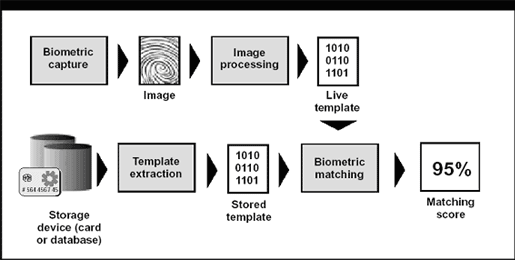 |
 |

|
| Biometrics India, Time Attendance India,Biometric, Biometric security
services, Biometric solutions, Biometric technology, Biometric fingerprint,
Biometric companies, Biometric fingerprint, Biometric research, Biometric books,
biometric tutorials, biometric india, biometric access, biometric contact pune,
bioaccess, biometric products, fingerprint india, time attendance, fingerprint
access control, time cards, biometric identification, biometric research,
biometric solutions, biometric services, biometrics ,Biometrics India, USA,
America, Europe, Japan, UK, Germany, france, uae, singapore, Time attendance
india, access control india, biometric india, security india Fingerprint india,
Precise Biometrics Biometric Biometrics Security Biometrics Information Bio,
Biometrics india, Biometric, Fingerprint scanner, Time attendance, Access
control, OEM modules, security, Time cards, SDK, USB finger print sensor,
Authentication, Identification, Verification, Biometrics time attendance,
Biometrics access control, Fingerprint time attendance, Fingerprint access
control, Proximity, RFID, smart cards, Software, Hardware, free, low cost,
cheapest, products, Solutions, project, services, development, matching,
recognition |
|
|
|
|
Home | About
Us | Services
| Products
| Solutions
| Support
|
Partners | News | Contact
Us |
 |
|
|
|
|
:: Why Biometrics? |
|
Biometrics
authenticates and determines an individual�s identity by
utilizing the uniqueness of his or her biological and
behavioral characteristics. Other authentication methods often
used are PIN method and Token (ID Card) method. Biometrics is
superior to PIN or Token methods in the following
ways:
|
1)
Increased Security
Biometrics offers superior security
than PIN or ID Card. Biometric methods do not involve danger
of information exposure like PIN and ID Card do and
unauthorized persons cannot attempt to steal or make a guess
at private information. |
2)
Increased Convenience
Today, people have to remember
many passwords. They should be able to provide their passwords
whenever they use their credit cards or log into various sites
on the Internet. Uniform passwords can lead to serious dangers
if exposed. However, biometrics does not require us to
remember our passwords. |
|
|
:: Classification of
Biometrics |
|
Biometrics
can be classified according to the type of biometric data
used, e.g., face, iris, voice, signature, or hand geometry
identification. However, all these methods take the same
authentication process. The biometric authentication process
is as described below:
|

|
|
Among
all available biometric technologies, fingerprint
identification is the most popular one. This is due to the
fact that fingerprint identification is far more efficient
than others, especially considering how economical it
is. |
|
top |
|
|
::
Issues |
|
1)
Standardization
Active efforts are being made to
standardize various core biometric technologies mainly
available in the U.S. and Europe. Major standardization
methods for biometric identifications are as follows: |
a)
BAPI
This standard was developed by I/O
Software in 1998. Being O/S, computer platform,
and sensor device independent, it was designed to
support the development of applications. Some of
the features include the unification of encryption
method, standardized programming environment, and
support for the client-server applications. |
|
b)
HA-API
This method was first introduced in
December 1997 at the 10th U.S. Biometric
Consortium held by National Registry Inc. a
company sponsored by the U.S. Ministry of National
Defense. Thinking that biometrics would be useful
in computer security, the U.S. Ministry of
National Defense supported the development.
However, they failed to secure companies to work
on the project. |
|
c)
BioAPI
Compaq was the first company to form
BioAPI Consortium, which consisted of 6 companies
with a goal to standardize industrial biometric
identification API in April 1998. In December of
the same year, and in March the following year,
BAPI and HA-API were included in new BioAPI.
BioAPI Consortium was constituted by various
groups, including 78 companies who are biometric
identification developers and medical/financial/
governmental users. BioAPI has recently been
adopted as ANSI/INCITS 358, American
standard. | | |
2)
Multimodal Biometrics
There has been heated researches
made to have multimodal biometrics be a method that overcomes
the limitations of unimodal biometric technologies. Multimodal
biometrics is recommended as a way to improve user
authentication through biometrics of greater reliability.
|
a) Multiple
Sensors
A single biometric feature can be
extracted through different sensors. For instance,
we can use optics-, ultrasound-, and
semiconductor-based sensors. |
|
b)
Multiple Biometrics
A number of biometric
features can be captured simultaneously for
authentication. For example, facial and
fingerprint identification can be used at the same
time. However, this method is not recommended due
to its high cost. |
|
c)
Multiple Units of the Same
Biometric
Various units can be used for one
biometric feature. Multiple units can often be
provided by natural human physical structure such
as through the user�s two irises and ten
fingerprints. A disadvantage to this method is
that it can make a user uncomfortable when
capturing his or her biometric feature samples.
The process can also take a long time. |
|
d)
Multiple Instances
This means that pieces
of biometric information of one feature are taken
at different instances by one sensor. One example
of this method is to capture a fingerprint a
number of times with a sensor or to sample a voice
or a face multiple times for later use. |
e)
Multiple Representation and Matching Algorithms
for the Same Biometric Input Signal
Multimodal biometrics requires more time
to work with the information and develop an
appropriate system than a unimodal biometrics does
since several modules are put in use. For that
reason, if a unimodal method can assure the users
of high enough dependability in a given
circumstance, it may not be necessary to employ a
multimodal biometric method. If the greatest
degree of reliability is required, however, it may
become necessary to adopt a multimodal biometric
method in order to ensure any possible
advancement. | | |
|
top |
|
|
|
|
Sitemap | � Bioenable Technologies
Pvt. Ltd. 2004-2005 |
|